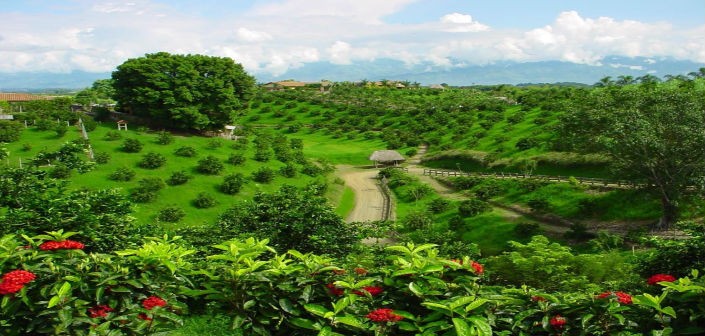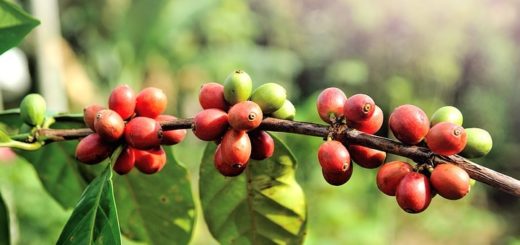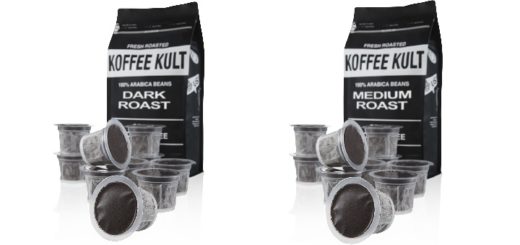What Country Produces the Best Coffee Beans? Colombia: Birthplace of Outstanding Coffee

Columbia: Birthplace of Outstanding Coffee Beans
Millions of people around the world fuel their lives with coffee. Together they consume two billion cups of coffee every day, but few people take time to appreciate their coffee’s flavor. If you savor coffee and carefully choose the origin of your coffee beans, allow me to introduce you to a country that has been producing outstanding coffee beans since 1835.
First, though, let’s consider three factors that greatly influence the flavor of coffee beans.
What are white coffee beans?
What makes a flavorful coffee bean?
- Quality of the Soil – We usually attribute the flavor of coffee to its variety or the way it was roasted, but fail to consider the importance of the soil. Coffee plants absorb large amounts of nitrogen, phosphorous, potassium, calcium and magnesium, as well as smaller amounts of zinc, iron and manganese from the soil. These essential nutrients enable the plant to grow, resist disease and produce coffee cherries with a healthy amount of caffeol, the oil which gives coffee its flavor and aroma. An abundance or lack of nutrients in the soil greatly impacts the flavor of coffee.
- Amount of Rainfall – The best coffee beans grow in the “Bean Belt” or in other words, between the Tropics of Cancer and Capricorn where the wet and dry seasons are distinct. Coffee plants require between 1,500 and 3,000 millimeters of rain during the growing season in order to produce about 10 pounds of coffee cherries each year. Insufficient rainfall results in fewer cherries and smaller beans with an inferior flavor.
- Altitude – Four thousand feet or more above sea level the air thins, temperature decreases and atmospheric pressure gradually drops. Coffee plants cultivated under these conditions grow slowly and produce dense coffee beans with an elaborate flavor profile. Just to give you an idea of how much altitude influences flavor, coffee beans grown at less than 3,000 feet tend to be bland and acidic with earthy undertones, while high-altitude coffee beans are smooth and sweet with undertones that range from chocolaty to nutty and floral to fruity.
Which country produces the best coffee beans?
Coffee connoisseurs, who spend their professional lives judging the aroma and flavor of coffee, agree that it is difficult to determine which coffee beans are the best, because the choice is subject to individual preferences. We can affirm, though, that of the fifty-plus countries that raise coffee Colombia distinguishes itself by consistently producing high-quality coffee beans.
Coffee plants arrived in Colombia in the late 1700s and historical records show that they exported their first coffee beans in 1835. Since then, Colombia has grown to become the third largest coffee exporter in the world. They produce and export about 11 million bags of coffee beans every year and every bag weighs 60 kg!
What makes Colombia’s coffee beans exceptional?
- Geography – The longest continental mountain range in the world, the Andes, runs along the western coast of South America. As the Andes mountains travel through Colombia, they split into three branches or “cordilleras” as the Colombians call them. One branch runs along Colombia’s Pacific coast, the second travels through the middle of the country and the third branch reaches toward Venezuela. These mountains and the high plateaus that accompany them provide the ideal altitude to grow dense coffee beans.
- Volcanic Soil – Azufral, Cerro Bravo and Petracas are just three of more than a dozen volcanoes nestled in Colombia’s mountains. Some of these volcanoes are active, but most are extinct and the only evidence of their activity years ago is the rich, dark soil that covers them. This nutrient-rich soil contributes significantly to the high-quality of Colombian coffee.
- Small Plantations – Colombia’s neighbor, Brazil, leads the world in coffee production and dominates one third of the market. Large corporations own and operate Brazil’s extensive coffee plantations where everything from planting to harvesting is highly mechanized. This impersonal, mass production results in excessive chemical use and poor separation of coffee berries. Ripe and unripe berries mix together during processing and the overall quality of the coffee decreases.
Unlike Brazil, Colombian plantations are small and often family run. Colombian coffee workers give their attention and years of experience to each coffee plant’s individual needs and when harvest time arrives, they roll up their sleeves and start picking. The personal care these coffee plants receive and the extra time required for manual picking does make Colombian coffee beans more expensive, but their high-quality and exceptional flavor more than compensate for the added cost.
In 1927, Colombian coffee growers united to form a non-profit organization called the Colombian Coffee Growers Federation. The Federation’s goals were to improve the coffee workers quality of life, guarantee sustainable farming practice, encourage exportation and most importantly, maintain the high standards of Colombian coffee. Today this organization represents 500,000 family-run plantations and it continues to ensure that Colombian coffee beans are outstanding in their quality and flavor.






















